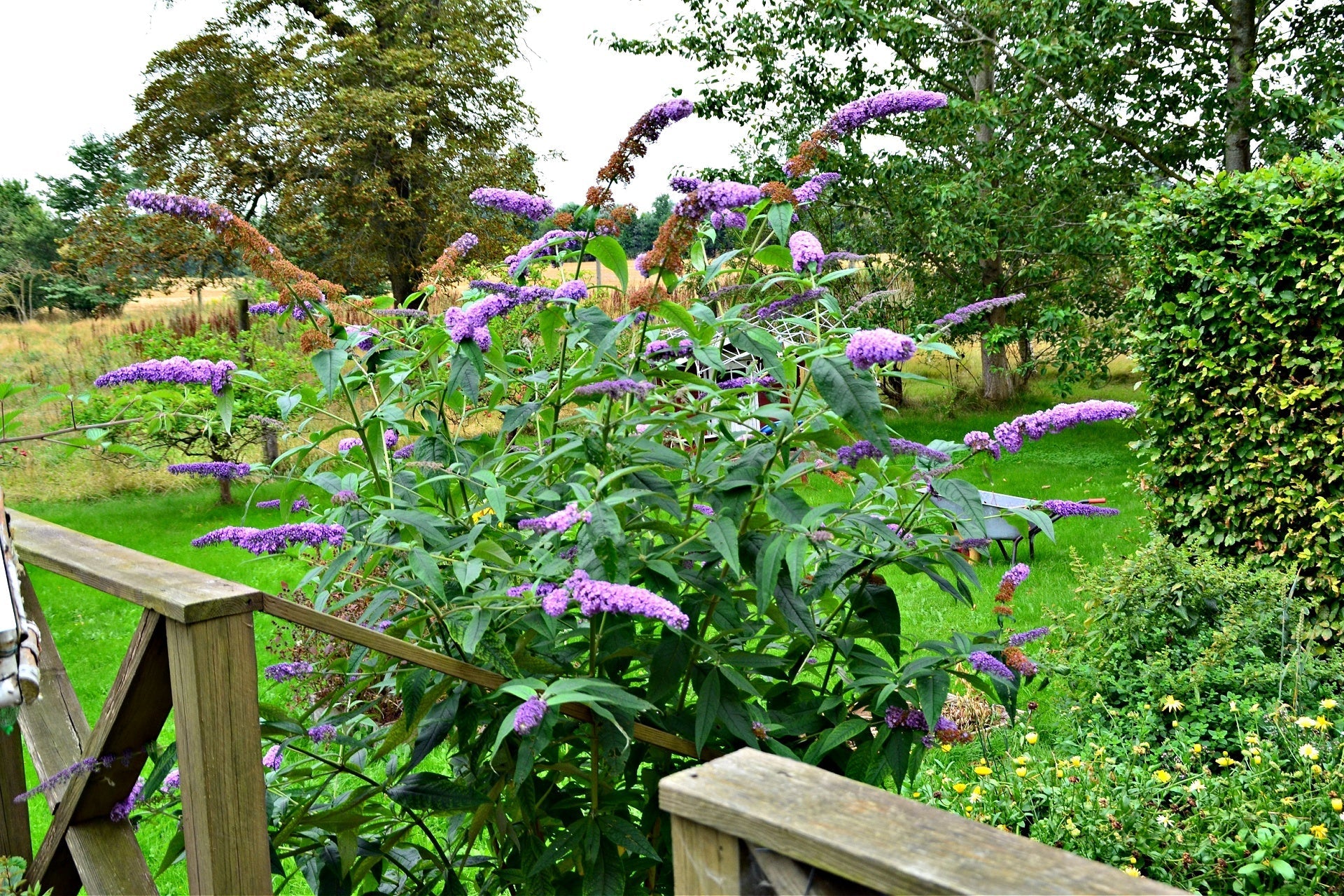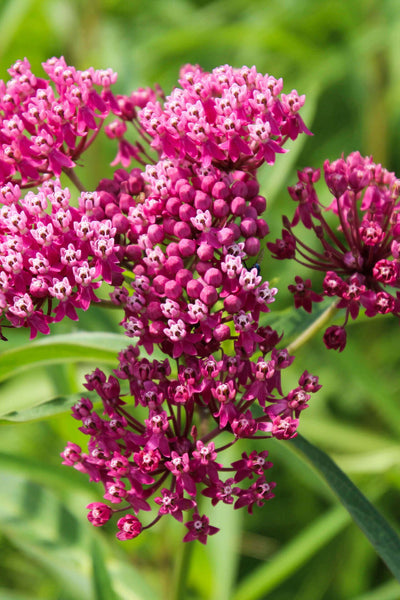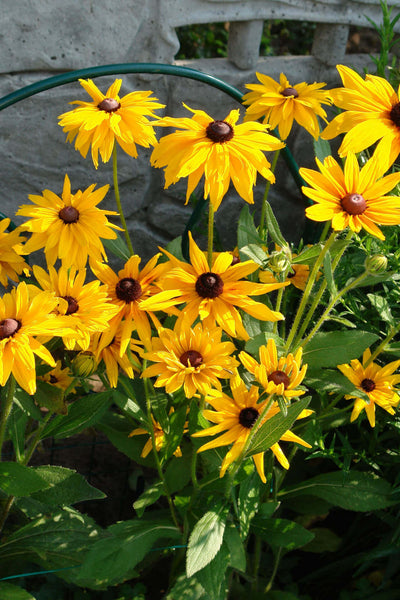People have long admired the butterfly bush for its beautiful, sweet flowers and ability to draw butterflies to it. Its beauty and toughness are loved by gardeners but in recent years it has caused a fight between gardeners and environmentalists. It gives insects nectar but it may also be bad for the environment and gardeners can make more informed decisions about pollinator friendly landscaping by being aware of the advantages and disadvantages of butterfly bush planting.
It is important to look into native plants for butterflies that provide both nectar and habitat if you like butterflies and want a vibrant yard that helps the environment. There should be a balance in your garden so that it is good for the earth and encourages biodiversity.
Why Choose Native Plants over Butterfly Bush
The butterfly bush is not native to this area as it comes from Asia and it looks nice because it has dense flower groups and blooms for a long time but in some places it can spread quickly by pushing out native species. Even though it has nectar the caterpillars can not eat its leaves because it is not a host plant for butterfly larvae.
On the other hand, native plants help butterflies through their whole life cycle. They have food for adult butterflies and leaves that larvae need to grow. If you choose native plants for butterflies, your yard will help the ecosystems in the area.
Here’s why native plants often make better choices than butterfly bush plants:
- Better natural balance: They give more native pollinators a place to live and food to eat.
- Less upkeep: Because native plants are used to the area, they need less fertiliser and water.
- Help for species that are in danger of going extinct: Many butterflies need certain natural host plants to stay alive.
One plant that is very important to monarch butterflies is milkweed, which both provides nectar and a home for their larvae. Adding milkweed to your garden can help butterfly numbers that are going down.
Top Native Alternatives for Your Garden
If you're thinking about planting a butterfly bush, there are many other beautiful, eco-friendly plants that will draw butterflies just as well. Native plants like these provide nectar, shelter larvae, and help keep the environment healthy.
Milkweed – The Monarch’s Favorite
One of the best plants for butterflies is Milkweed. It has groups of pink, orange, or white flowers that are full of juice. The most important thing about it is that monarch larvae can only live on this plant. This makes it a must-have for anyone who really wants to protect butterflies.
Blazing Star Perennial – A Pollinator Magnet
Native to the United States, the Blazing Star Perennial which is also called Liatris, does best in open places. Butterfly, bee, and hummingbirds are drawn to its tall spikes of purple flowers. It can handle drought and looks great in natural garden designs.
Button Bush – Wetland Beauty
Another great choice besides the butterfly bush is the Button Bush Live Stakes. Butterflies and bees can't stay away from its round white flowers that bloom in the middle of summer. Button bush also helps birds and gives them places to nest near ponds or rain gardens.
Coneflower and Black-Eyed Susan
Native plants like black eyed Susan and coneflower have flowers that last a long time and lots of nectar. Plus they look better with butterfly bushes and are better for the earth.
For best growth you must group these plants together based on how much water and light they need. Having a range of heights and colours in your yard will make it look nice and be good for the environment.
Impact of Butterfly Bush on Local Pollinators
Even though the butterfly bush has nectar but it does not always help pollinators stay healthy in the long run. It can get away from farms and become invasive in some places, pushing out native plants that butterflies and other insects rely on.
The Hidden Drawbacks
- Not enough food for the larvae: no butterfly species feeds caterpillars on butterfly bush plants.
- It could be invasive: it can spread through seeds and take over wild areas.
- Less biodiversity: when native plants are moved, other insects have fewer places to find food.
Along with butterfly bush planting, you might want to include native plants that provide nectar and food for larvae throughout the growth season. This helps keep the ecosystem in order so butterflies can find food, have babies, and do well.
This is a great spot for native plants like Milkweed and Blazing Star Perennial. Their flowers attract many kinds of insects, and their leaves give young butterflies a place to rest and food.
Butterfly Bush Care Tips (If You Still Choose to Grow One)
If you live in a place where butterfly bush plants are not invasive and still want to keep one in your yard, you need to give it the right care to keep it from spreading too much and making it hard to control.
- Regularly remove dead flowers from your plants before they set seeds to stop them from spreading.
- Cut the plant back to the ground in early spring to help it grow healthy new leaves.
- Keep an eye on the seeds and remove any that grow in places that weren't meant to be planted.
- Use little water as once it is established the butterfly bush can handle being dry.
Even with proper butterfly bush care, putting it in a garden with best plants for butterflies will help keep the ecosystem in balance. In this way, you make a place that looks good and can last for a long time.
FAQs
Is butterfly bush a native plant?
The butterfly bush doesn't come from North America; it comes from Asia. In some places, it's seen as invasive.
Why are butterfly-attracting plants important for gardens?
They give butterflies food and a place to live, which helps them reproduce and keep populations healthy.
What are the disadvantages of a butterfly bush?
It can spread and push out local species, not doing much good for the environment.
Where is the best place to plant a butterfly bush?
Pick places that get a lot of sun and have good drainage. Also, don't put it near natural areas where it could spread.
How to plant butterfly bush plants?
Plant at the same depth as the root ball and dig a hole twice as wide as it is. After planting, water deeply. Use mulch to keep soil wet and keep weeds from growing.




